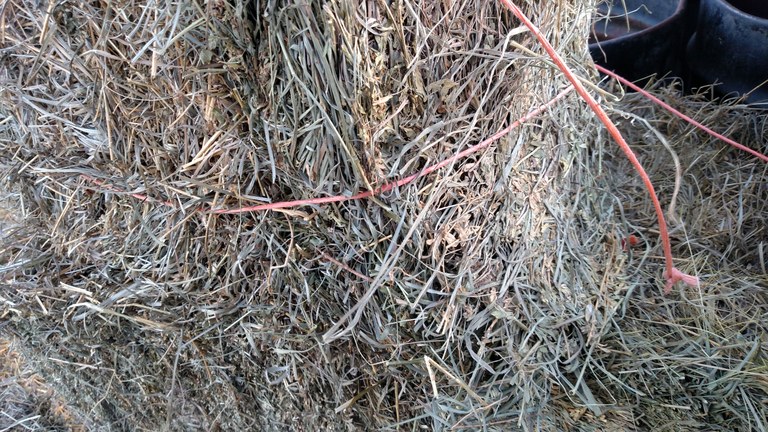Cattle Feed – Does It Pass the Test?
For years, colleges have recommended testing feed for nutritional value. The minimum feed tests that should be done for a cow herd are dry matter, crude protein, and energy (as measured by acid detergent fiber). We can also test for macro minerals: calcium, phosphorous, potassium, magnesium and sulfur but that’s an additional cost. For even more expense, we can test for micro minerals which include copper, zinc, selenium, and others.
While a good nutritionist considers all nutrients required for a beef cow or calves, a few specific tests influence the most expense for feeding cattle. These five tests include what cattle need for energy, protein, calcium and phosphorous and the amount of moisture in the feed. A well balanced mineral mix can help supply the remaining nutritional needs.

Energy is needed to provide heat, muscle contraction, and growth in all animals. A laboratory feed test cannot directly measure energy, so we determine acid detergent fiber (ADF) in the feed and calculate the energy content.
This year, most grass hays have been testing low in energy. Grass hay should have 52-56 % TDN (energy). Some hays are testing at 40-45% TDN. These hays need supplemental energy or cattle will lose weight during the winter.
Also, if alfalfa hay has been rained on after cutting hay and before baling, it has lost energy content. The rain has washed part of the nutrients out of the hay.
Protein content of feeds should be tested. Surprising, this year’s fed stuffs mostly have adequate protein content. A cow needs a ration with 7-9 % crude protein and calves need 11-13% crude protein rations.
Co-products like beet pulp or beet tailings contain a high percentage of water. A dry matter test will determine how much dry feed is in a ton of feed. Pressed beet pulp should have 30% dry matter. Wet pulp (not pressed) may have only 15% dry matter (85% water). Consequently, wet pulp would need to be fed double (2 times) on an ‘as fed’ basis as compared to pressed pulp to get the same dry matter and energy content (60 pounds wet equals 30 pounds pressed).
Dry matter, energy, and protein can vary drastically among feeds. Knowing the actual value will help manage feed costs in cattle through avoiding feeding too little or too much. For specific questions on cattle nutrition or how to take a feed sample and where to send it, contact the Carrington Research Extension Center or your local Extension agent.
Selected feeds tested Fall 2015:
Karl Hoppe
Area Extension Specialist / Livestock


